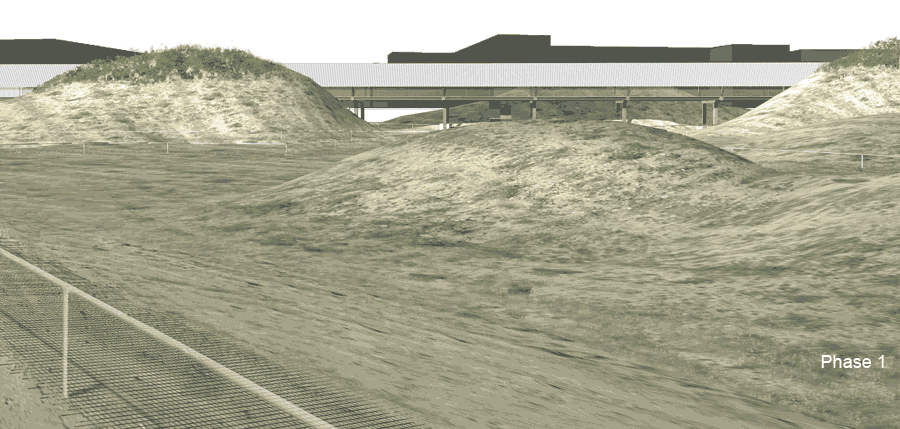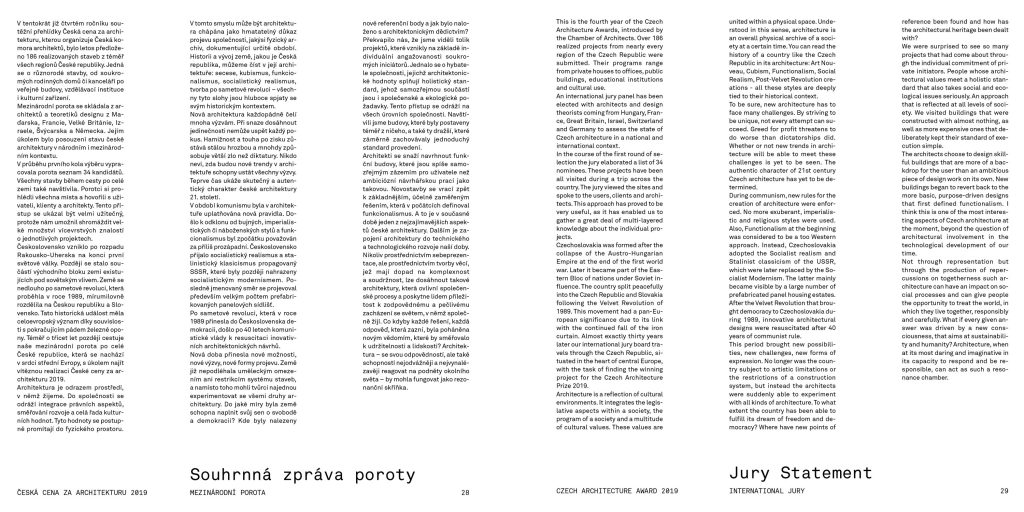‘Topography of Terror’ – Documentation and Visitor’s Centre, Berlin
Waiver of urban gestures and symbolism. Preservation of the disordered character of the space. Curated as urban with stabilizing natural processes.
The documentation centre is entering the site as a guest. Only partially covered by mounds, the building is not visible as a whole. Similar to a research station it is stabilizing itself with a simple volume on-site. The structural elements are reduced to a minimum. Only the roof appears to be the only horizontal line that establishes an order between overgrown hills and open areas.
“The borders between real and created topography becomes blurred up to the point where nature seems more man-made than the artificial building. A structural picture of the world appears, in which humans, whose traces play a major role on all pictures, stay completely invisible.” Prof. Martin Prominski
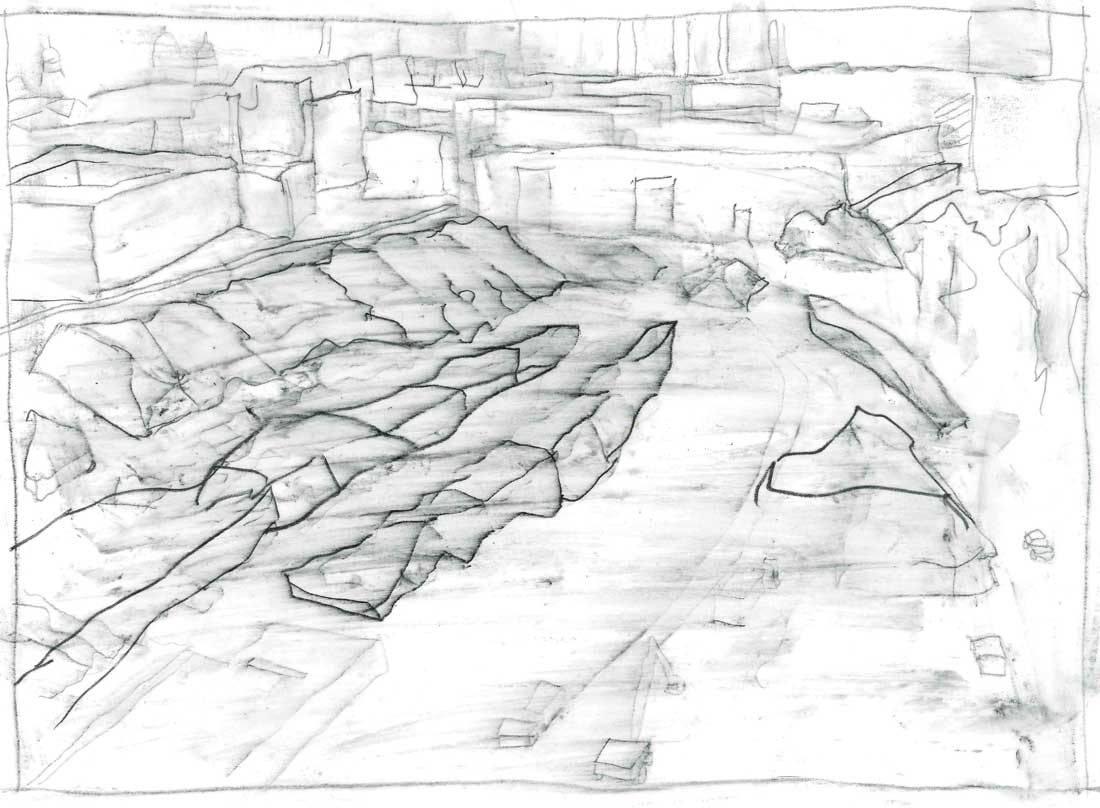
View over the site towards east
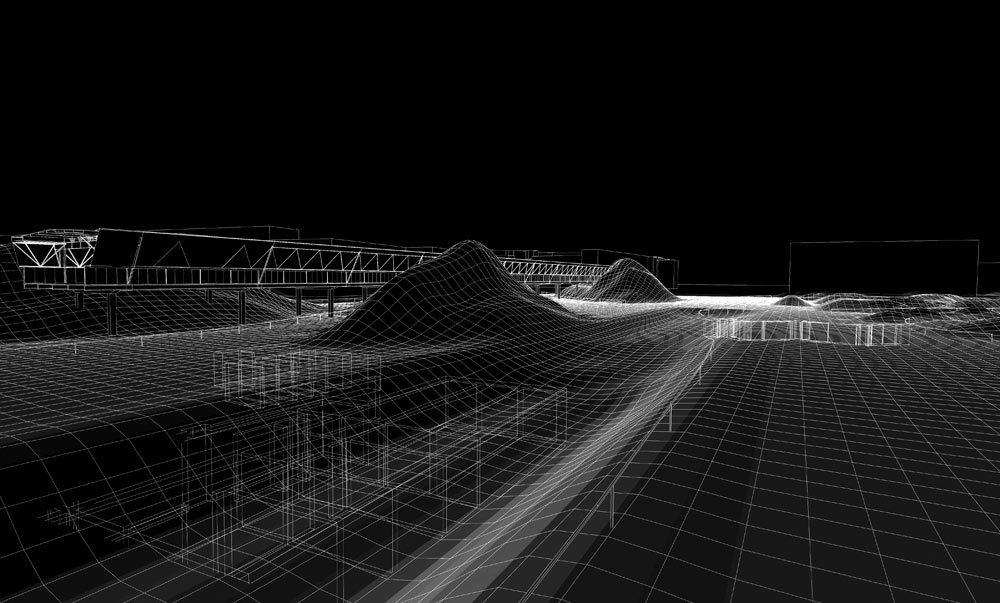
Documentation centre – view towards east
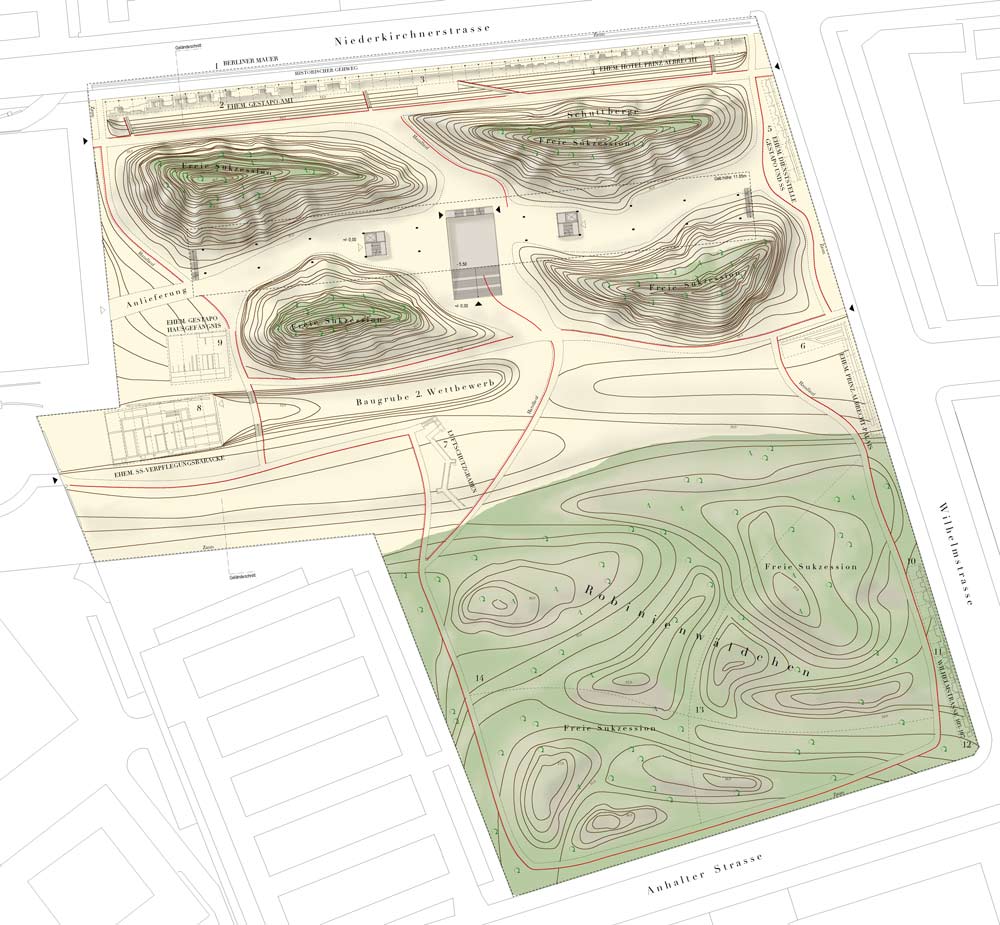
Site plan of the area
Process perspectives
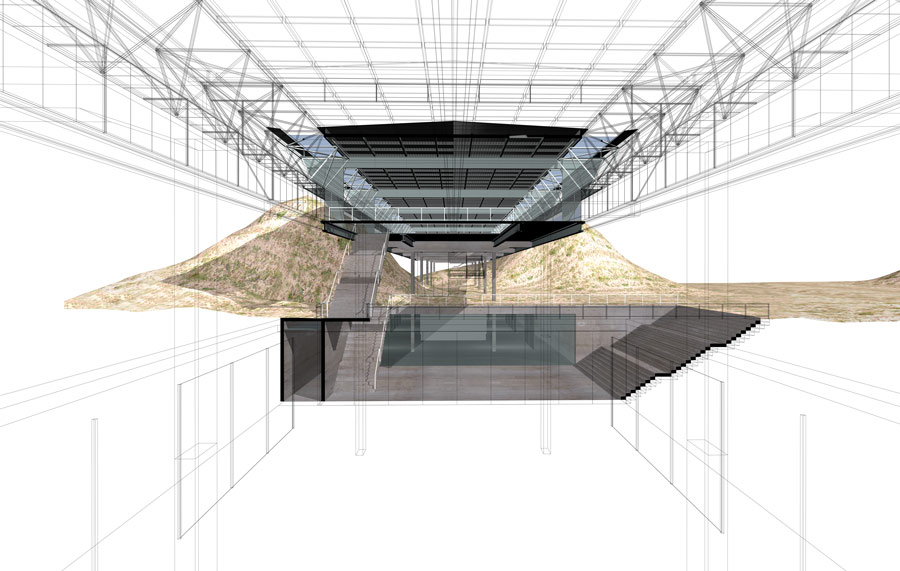
Entrance, foyer
Martin Prominski about the open space concept


Institute level (+6.00m) – floor plan and climate diagram

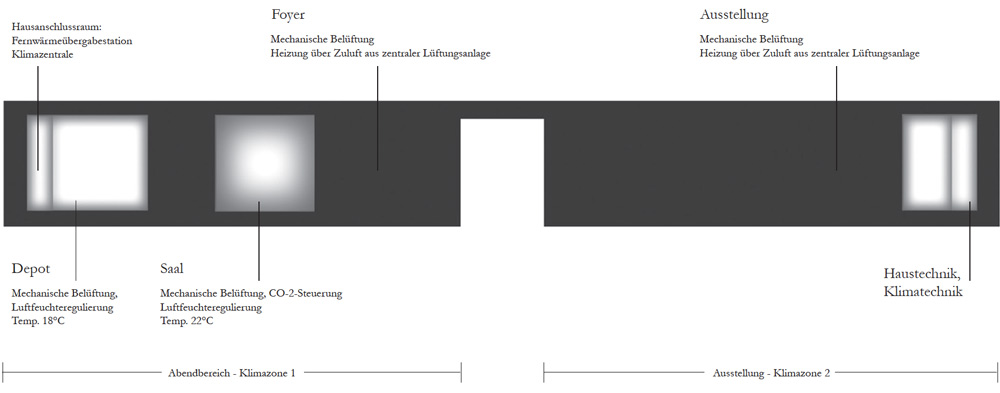
Exhibition level – floor plan and climate diagram
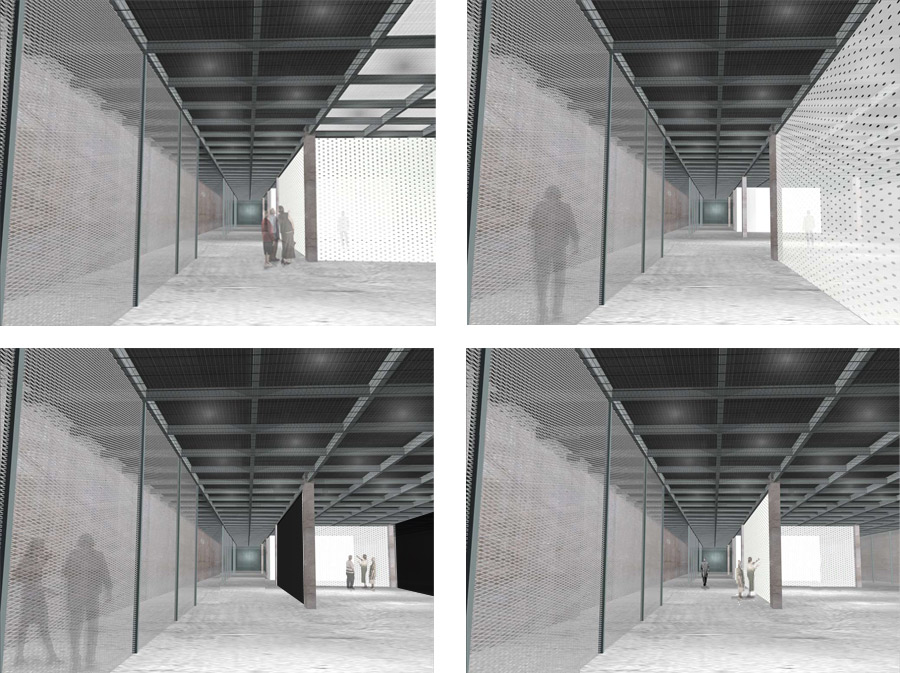
Exhibition area with variations
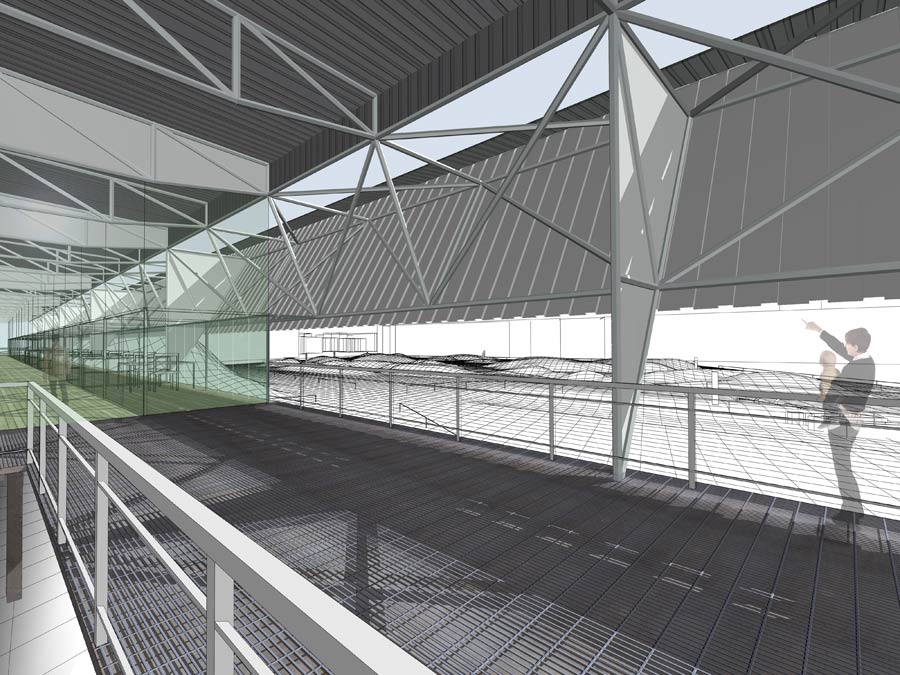
Foyer for institute and library
| Program | Documentation- and visitor’s centre on the site of the former central institutions of Nazi persecution and terror– the Secret State Police Office with its own “house prison,” the leadership of the SS and the Reich Security Main Office |
| Status | Realization competition, short-listed, exhibition of the works at Martin-Gropius-Bau, Berlin |
| Location | Berlin-Kreuzberg, Germany |
| Client | Federal Ministry for Transport, Building and Housing, Berlin |
| Team | Imke Woelk und Partner Architects in corporation with Prof. Martin Prominski, Landscape architecture, Hannover |
| Area | 3600 m2 |
| Construction | Exhibition level (-1) as reinforced concrete trough. Institute level (+1) as steel framework with glass/corrugated siding facade on concrete and composite steel structure |
| Services | Program and location analyses, strategic development, artistic concept, technical concept, design planning, visualisation |
| Date | 2006 |

